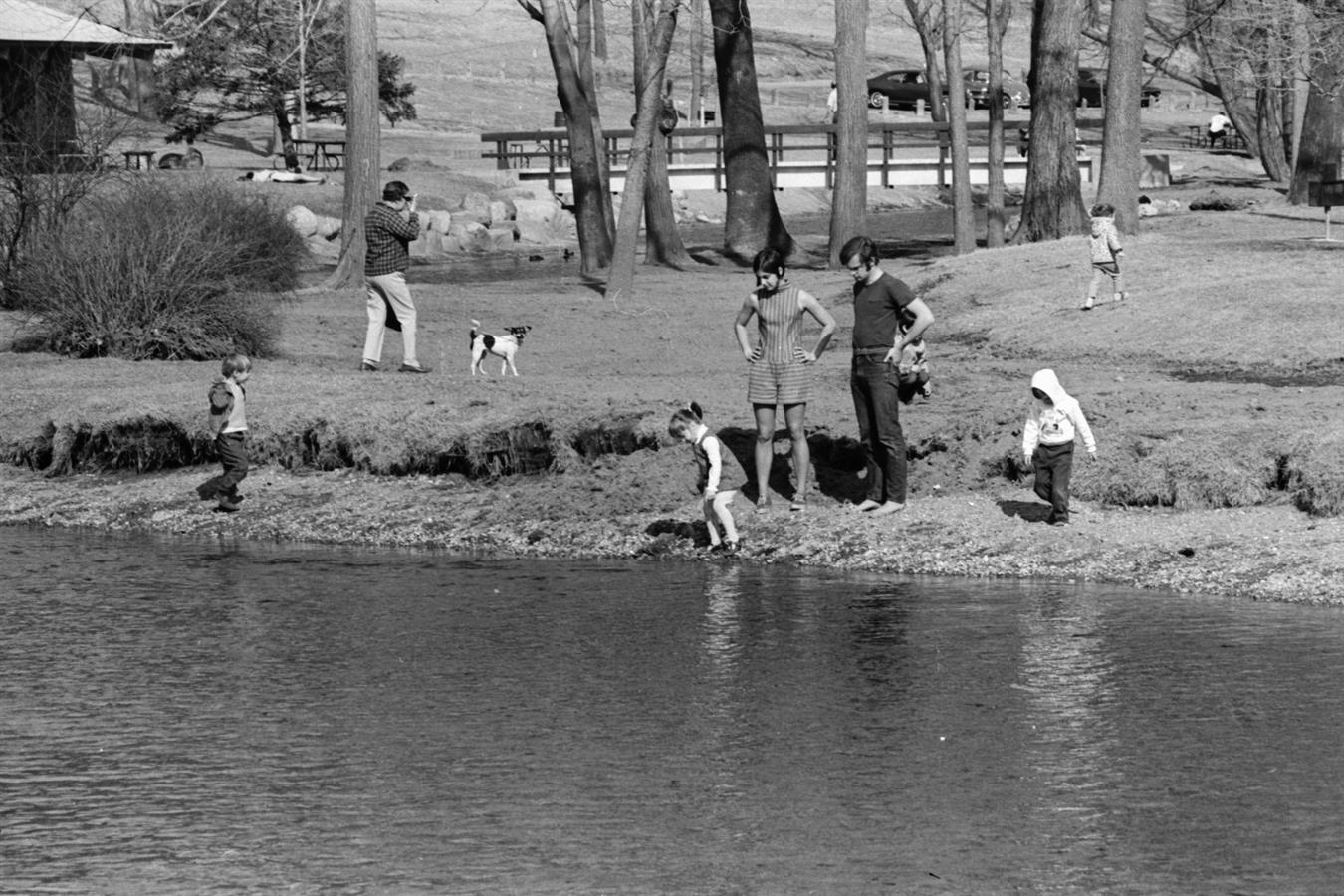History
Ann Arbor's city parks sit on the ancestral and traditional homelands of several indigenous Native peoples. Read a
land acknowledgement from the city and learn more about the early history of the land
here.
In the late 1890s, The City of Ann Arbor acquired the property now known as Island Park and Cedar Bend Nature Area (at that time known as Cedar Bend Park). The purchase was made in small parcels from several people. In May of 1905, this property was turned over to the newly formed Park Commission. Cedar Bend Park, by far the largest park in the city at that time, received the greatest amount of effort towards developments. A special sum of $500 was provided for making a drive and a general appropriation of $1,500 for the care, maintenance and improvement was made. In December of 1905, a landscape architect,
O.C. Simonds, was hired to lay out the drive and its embellishments. At this time, this park was used extensively for pleasure riding, driving, picnics and swimming. O.C. Simonds noted that it was important to keep the native growth as "no landscape gardener can plant as well as nature has planted." He was passionate about preserving the river banks and nature for future generations and did extensive design work for the Ann Arbor park system (read:
Notes on O.C. Simonds and Ann Arbor's Parks). He advocated for the development of the drive for public access and viewing of the river bank. "What is more restful to the tired than a walk or drive along the beautiful river."
In May of 1914, bids were taken for a park shelter and these ranged from $798-$1,700. After some review the contract was awarded to John Koch, the low bidder, for $780. Total cost of the new shelter was listed in the financial statement for 1914 as $859.64. As a result, an elegant shelter house was built by John Koch in 1914. Included in the structure were public restrooms for Island Park. The view from the Wall Street bridge appears as fanciful as any classical "folly" in an 18th Century landscape. This shelter remains today and is known as the Greek Revival shelter.
The western concrete bridge was built in 1918. In 1998 the Island Park concrete footbridge was restored and a plaque on the bridge reads: "This bridge was originally build by the City of Ann Arbor using engineering and park employees for the design and construction. It has withstood floods and many footsteps over the years.
Flooding has occurred throughout the years. View
1937 flood photos here and
here,
high waters in 1942,
1943 and later
flooding in 1969.
Over the years, Cedar Bend Park and 'the Island' as it was called, became separated into two properties giving Island Park distinction as its own park. Another shelter was built in the 1930s near the concrete bridge on the mainland and today remains known as the "old shelter". You can also view
volunteers painting this shelter in 1968. Proof that volunteers have a long history in helping care for the parks!
In 1962, a new shelter had been constructed on the mainland to house larger restrooms accommodating the large crowds this park would draw on the weekends. View the dedication ceremony pamphlet
here. A resident named Adolph Diehl had left the City of Ann Arbor five, $1000 New York, New Have and Hartford railroad bonds for the purpose of erecting a shelter house at Island Park. These bonds were held for some time and interest received was invested in U.S. Savings bonds. When a favorable market developed the council authorized their sale. The cost of the shelter was estimated at $30,000 with the Diehl Trust Fund contributing $7,377 toward the shelter. It still stands today and while built in 1962, remains known as the "new shelter."
In 1964 the Greek Revival shelter was repaired and painted and the wooden footbridge leading to Fuller Park was built. Also that summer twenty mallard ducks were obtained from the City of Three Rivers, Michigan and released at Island Park. These ducks were fed by the parks department personnel and the general public.
Francis Baker was a dedicated parks employee who tended to the grounds and was known to be the guardian of the flock. The flock thrived and in 1966, the number of ducks had risen to about 150.

A warm spring arrives in 1969 and local residents are photographed visiting Island Park.
For additional history notes, you can review this
history summary recorded by parks staff in 1973.
In 1984, the Greek Revival shelter on the island was repaired again, opening the shelter up for interpretive panels and capping the original roof. By this time, the shelter had become a photogenic landmark on the Huron River shoreline. It has appeared in various advertisements, commercials, articles, on the cover of the local phone book and in thousands of wedding and graduation photographs. In the mid-90s this Classic Revival pavilion was designated as a historic structure by the Historical District Commission and the Ann Arbor City Council. It remains today known as the Greek Revival shelter and is the oldest shelter within the Ann Arbor Park System. In 1995 the shelter was completely renovated to its original architecture by removing the capped roof, restoring the original parapet walls and hand tooled trim. This
restoration project was funded by a grant from the Michigan Equity Fund.
